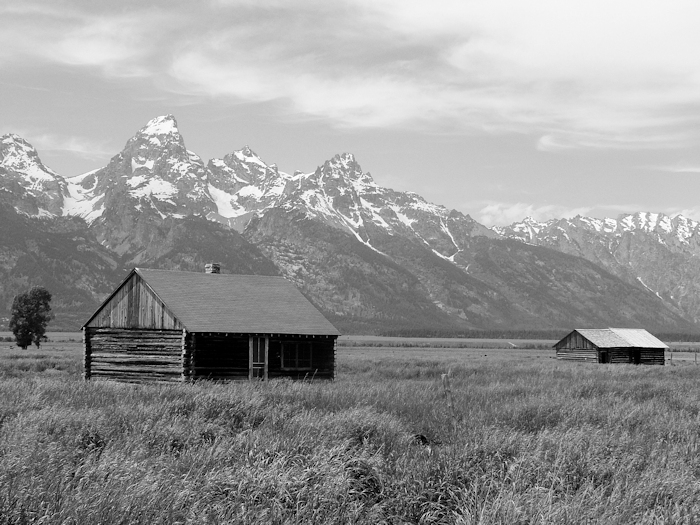
Any hope of a quick return trip for Lewis & Clark was dashed early on. Bad weather continued into late March and April and they found progress back up the Columbia painfully slow. They also had to buy new horses for the trip back over the Rockies, but had precious little left to trade. Tempers were starting to fray, not between the expedition members but with the coastal and Columbia plains Indians. Eventually, L&C made it back to their friends the Nez Perce tribe and collected the horses they had left there for the winter.
Thick snow made the re-crossing of the Lolo Trail much easier as it masked the tangle of roots and foliage that had slowed them down on the westbound traverse. Still, it was a tough trip and they had to turn back at one stage having ignored the Nez Perce’s advice about the conditions. Eventually they reached Travelers Rest and made the decision to split up. Lewis was to take a northerly route with the explicit intention of seeing whether the Marias River reached beyond the 49th parallel and the Canadian border. This was crucial because the Louisiana Purchase gave the United States all land drained by the Missouri and its tributaries.
Clark meanwhile took a southerly route to explore the Yellowstone River. They were to meet at the confluence of the Yellowstone and the Missouri.
I was also heading to Yellowstone – but the national park rather than the river. I said a fond farewell to the Camry – my 21st century pirogue – and hopped on a plane for Salt Lake City to acquire a new car (which turned out to be a convertible – very nice too) and drive up through Utah and Idaho, back into Montana and eventually into Wyoming.
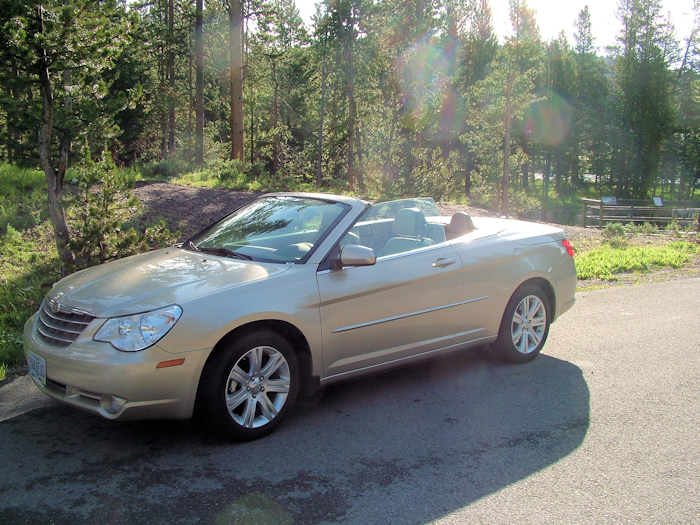
It was a long drive but uneventful – much like Clark’s trip. It was Lewis that saw all the action – most notably the only fatal encounter of the trip. Lewis and two of the men ran into a small Blackfeet Indian war party. Although going out of his way to avoid confrontation, a combination of actions resulted in a scrap escalating into a gunfight that the US soldiers were always going to win. Two Blackfeet were killed that day – the only direct deaths on the expedition. Lewis himself was shot sometime later, by the one-eyed boatman Pierre Cruzatte whose fiddle-playing had leavened many an evening. The two were out hunting and apparently Cruzatte mistook Lewis for an elk.
Sounds stupid, but I mistook a bison for a rock. At very close quarters. Yellowstone is chock full of bison, and the park goes to inordinate lengths to point out that these are dangerous wild animals not to be approached – people are seriously injured every year by bison and fatalities are not unheard of. The basic rule is steer clear. Of course when you’re hiking along an open well-used path barely half a mile from Old Faithful, one of the country’s most popular natural attractions, you’re not expecting a bison in your way. It was lying down and I really didn’t see it until I was almost on top of it, at which point I stopped very abruptly indeed.
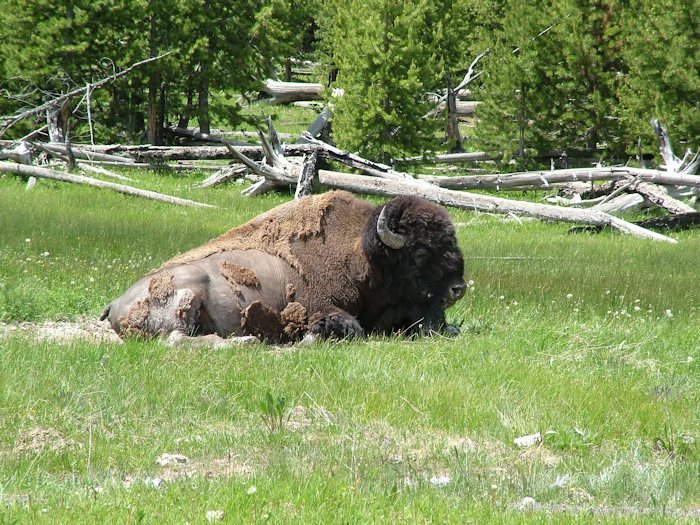
The bison didn’t seem overly interested, but did raise itself up to have a closer look. They are short-sighted animals, so it may still have had no idea what was in its personal space. They are also bloody big. I decided that the best option was to give it a very wide berth, which seemed to work for both of us. I’d wanted to see a bison, but had expected it to be through binoculars at at distance in a herd, rather than in my face.
It’s hard to know what to say about Yellowstone – it is a truly remarkable place in many ways. Old Faithful didn’t impress me, but the other geysers and hot pools most certainly did. While tourists tutted if a geyser was “running late” (signs go up for those that erupt more frequently saying when the next one is likely to be), I wanted to shout “people, there’s steam coming out of the earth. All around you.” It was amazing.
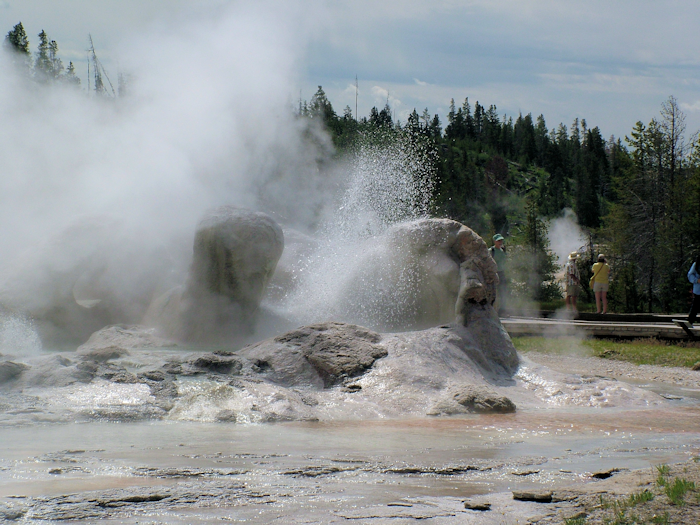
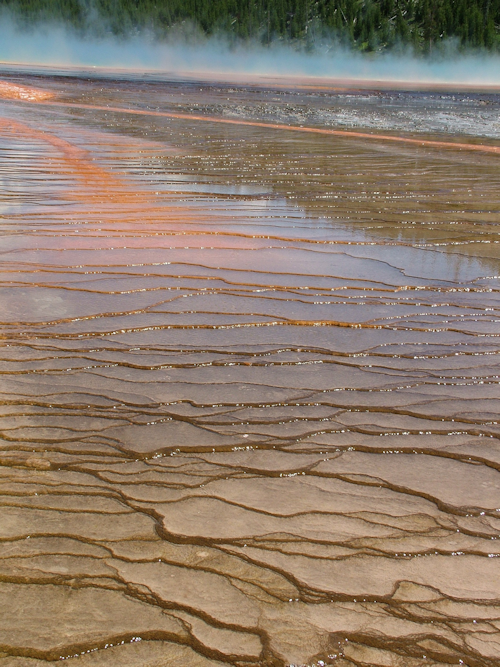
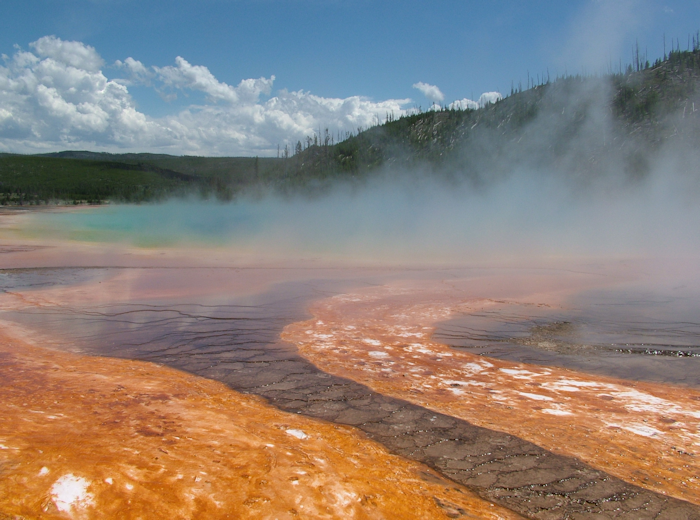
The wildlife is pretty amazing too. I didn’t get to see everything, but I did see my first grizzly, hundreds more bison and the ubiquitous elk. And the depressingly common touristus stupidus who probably outnumber all the other creatures combined. Yellowstone is busy and some people drive like morons. It does not always make for happy road travel – and the park is enormous (about half the size of Wales) so road travel is essential. I did get off the tarmac and onto the trails around the spectacular Yellowstone canyon.
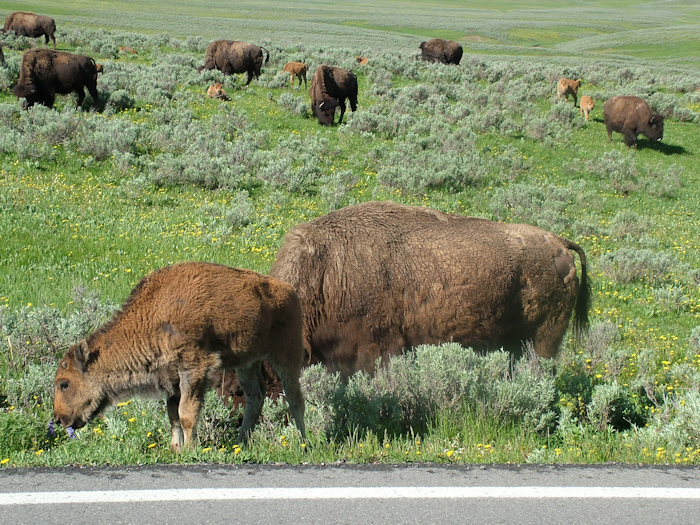
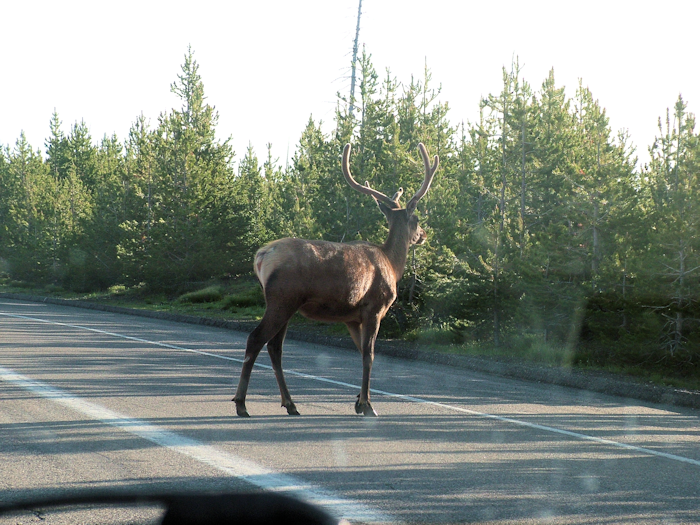
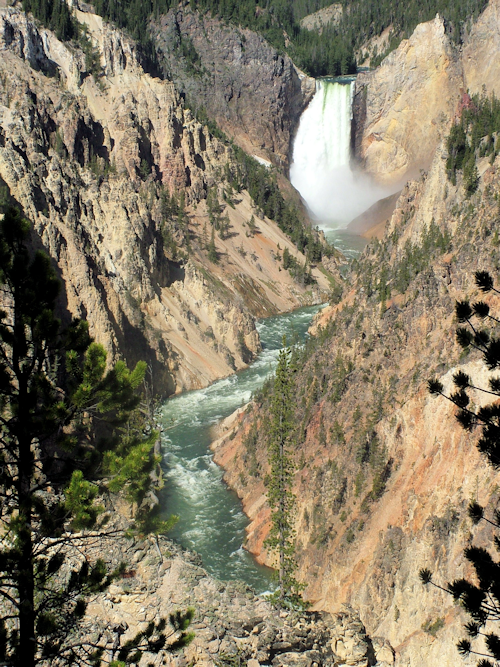
All commercial operations are run by one company, Xanterra, and the many many employees are an integral part of the Yellowstone experience. They tend to be either very young or of retirement age – as two groups who can work seasonally. They all wear the same uniforms depending exactly what job they do and they all have badges with their name and home state (or country) printed on. Very few are from Wyoming.
Clark never made it into what is now Yellowstone Park, but John Colter – one of the more famous soldiers from the Corps – definitely did a couple of years later. Colter is something of a mythical figure in these parts. Certainly if he actually went through all that is attributed to him he would have had the most astonishing life. The facts we do know are exciting enough and he is generally believed to be the first “mountain man”.
Colter was also probably the first white man to see the Teton mountains, which was my next destination. This jaggedy collection of snow-covered peaks are the youngest mountains in the US and the park – a little quieter than Yellowstone – is awash with wildlife, especially black bear and elk, along with moose, wolves, bison and numerous birds including sandhill cranes.
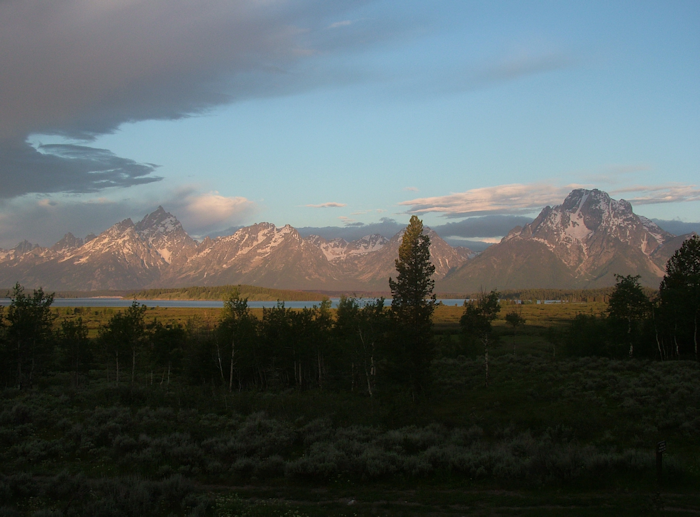
I’d splurged here on a room with a view, and took the opportunity to hit the water again on an early morning float trip down the Snake River. Sadly we saw very little exciting wildlife, but it was great to get a sense of the mountains from this perspective.
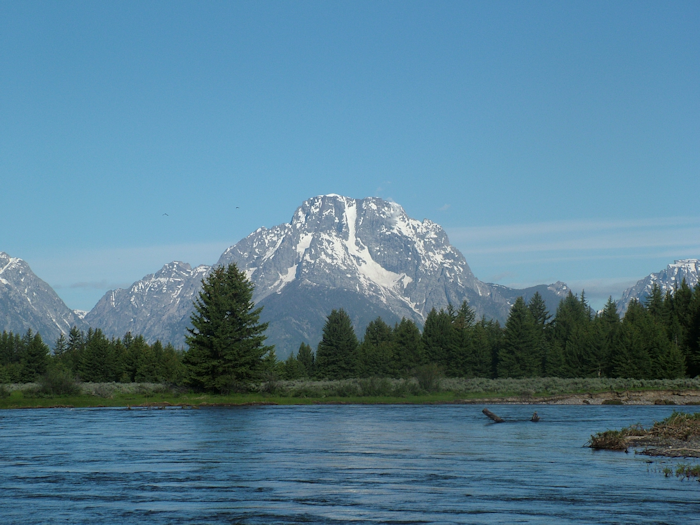
Despite covering a substantial distance each, Lewis & Clark only missed each other by a few days at the agreed meeting spot – and that was largely because the mosquitoes were so bad that Clark’s party, who got there first, were forced to find a new camp downriver. The Corps had become very fragmented, with up to five separate groups on the trails at one stage, collecting horses, hunting, checking cached stores and carrying out various logistical tasks. But soon they were back together and flying down the Missouri at speed to the Mandan villages.
Here, where they had first encountered Charbonneau and Sacagawea, was also where they went their separate ways. Charbonneau wanted to stay with the party, but it is clear that the captains weren’t that impressed with his character and were very happy to leave him there. Sacagwea, generally referred to as “the Indian woman” by Lewis, was a slightly different issue. Her involvment in the expedition – although overstated in popular accounts – had been critical at times, and the men had certainly developed an affection for her young son. Clark was moved to say that when the boy was older he would willingly arrange for his education. But her journey had come full circle and she stayed behind with Charbonneau.
From Mandan back to St Louis took a matter of weeks and on September 22nd, 1806, Meriwether Lewis, William Clark, and the remainder of the Corps of Discovery reached the city, which had grown since their departure two years earlier. Most people had completely forgotten about them, or assumed they were dead. No-one had any news from them since they had dispatched the keelboat back to Jefferson in early 1805 . They were rightly feted as heroes.
Strangely, people didn’t turn out in huge numbers for the end of my adventures – but then I wasn’t returning to St Louis. This was clearly where I went wrong.
From the Tetons, I drove south through some amazing countryside in Wyoming and Idaho (managing to avoid hitting cattle and an eagle) to Salt Lake City. It was July 4th – Independence Day – and a Sunday. The place was pretty much dead.
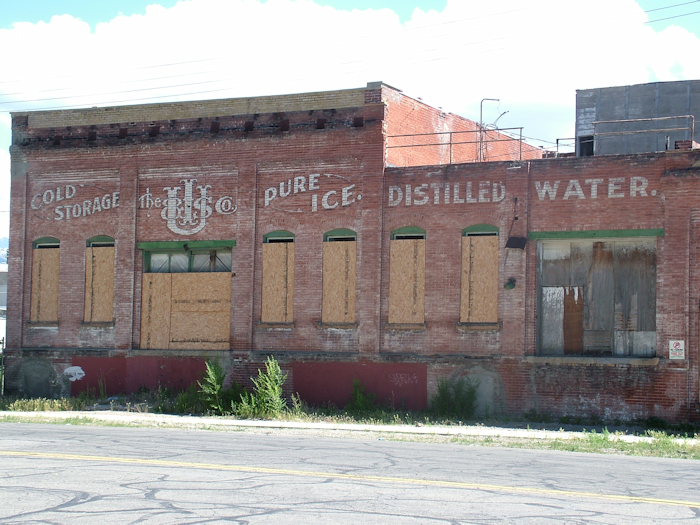
On reflection, this isn’t that surprising. Half the population of Salt Lake are members of the Church of the Latter Day Saints, better known as Mormons. The church’s office building gives some sense of the scale of their operation here.
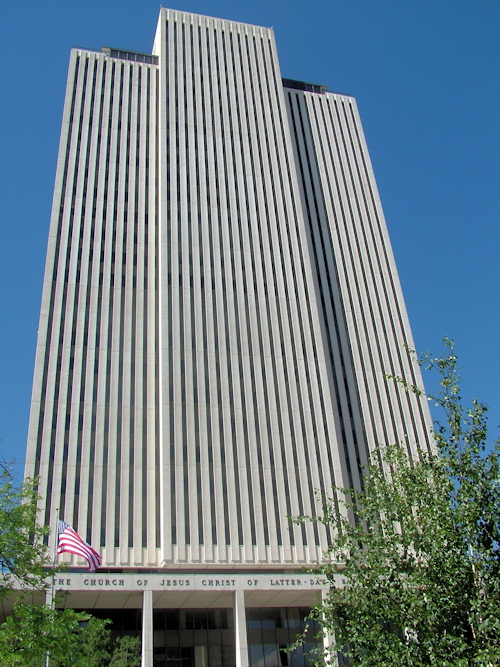
The Mormons have never really got on so well with the US government, so perhaps a lack of demonstrable patriotism – especially on a Sunday – is not surprising. I’ll be honest – I didn’t fall in love with Salt Lake City and wasn’t that sad at having to be on a train at 4.15 the next morning.